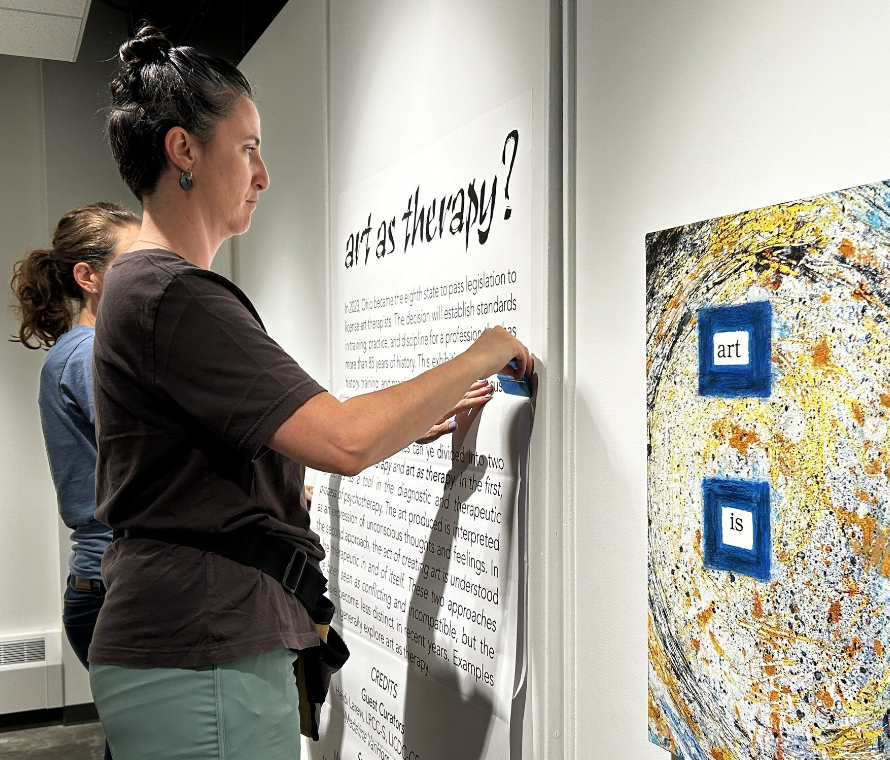
By: Ellyn Sjoquist
It’s your first semester at The University of Akron, and you’re eager to get involved in campus life and meet new people. You head to the SOuRCe, the Student Organization Resource Center, located in the basement of the Student Union.
A student receptionist at the welcome desk hands you a brochure listing hundreds of description-less organizations; you aimlessly skim the columns of tiny typeface hoping that one will leap off the page and catch your eye.
You scribble your name, email address and a haphazard list of organizations on a sheet of paper and leave it with the student at the desk.
Eventually, the receptionist will give your information to a graduate assistant, who will find contact information for the leaders of the clubs on your list. They will email this information to you so you can contact the organizations yourself.
Then you can wait. Hopefully, the email addresses you received are accurate. Hopefully, the recipients will respond eventually.
At The University of Akron, that was the procedure used to connect students to organizations until as recently as this fall. With such a lengthy process in place, Civic Engagement Coordinator Alison Doehring isn’t surprised that only 24 percent of students at UA are involved in student organizations on campus.
“Now that we have OrgSync, involvement is a much simpler process than it used to be,” Doehring said.
UA student Maria Bedell described OrgSync as a Facebook for student organizations.
Launched in 2006 by Eric Fortenberry, OrgSync provides colleges and universities with software subscriptions, which allow them to centralize communication among students, student organizations and administrators.
Students enrolled in schools that use OrgSync create individual profiles much like those on other social networking websites. Leaders of student organizations also create profiles to provide an overview of their purpose, details of events and meeting times and contact information for their leadership. Rather than searching lists of organizations in a brochure, students can peruse and contact student organizations online.
OrgSync also helps leaders of student organizations.
“It’s fantastic,” Bedell said. “It’s great to be able to send out information from a central system that anyone can join.”
Bedell, a senior from Cuyahoga Falls, is involved in Students for Life, Newman Campus Ministries and Akron Council of Education Students. Her favorite OrgSync feature allows her to send text messages from her club’s OrgSync page to all the members on her club roster.
Junior Abbey Gauger is also excited for the new software.
“OrgSync was confusing at first, but you just have to play around with it and figure it out,” said Gauger, the vice president of recruitment for Kappa Kappa Gamma.
She described how her sorority has taken advantage of the online polling feature to tally votes on issues, from t-shirt designs to dinner menus.
“This has been a transitional semester,” Gauger said. “After this semester, everything will be on OrgSync.”
Gauger added that she looks forward to using OrgSync’s e-portfolio involvement transcript. Funded by a 2011 grant from the University of Wisconsin, the e-portfolio tracks students’ co-curricular involvement through their college careers.
“It adds some validity to students’ resumes,” Doehring said. The e-portfolio, which also allows students to upload letters of recommendation and samples of their work, will be introduced to UA’s OrgSync next fall.
Since its launch in July, OrgSync at UA has grown steadily by nearly 150 students each week.
“Our goal was to have 3,000 students by the end of the semester,” Doehring said. “We had that by the end of September, so our new goal is 5,000 students.”
By the second week of November, UA’s OrgSync had 4,538 users.
In the meantime, as students continue make their way to OrgSync, leaders of some organizations find themselves with twice their previous workload, as they manage their club for students on and off of OrgSync.
Senior Lindsay Mulhollen, a Mass Media Production major from Tallmadge, is tackling this problem as the vice president of Terpsichore Dance Club.
“Terpsichore is just a unique organization because everyone is in the same building 24/7,” Mulhollen said. “It’s usually more effective to hang fliers and talk to people in person because most of our members don’t check their email regularly. It was like pulling teeth just to get some of our members to even sign up.”
Mulhollen also expressed concern about the loss of face-to-face interaction when organizations rely entirely on OrgSync.
“It’s weird that people can just join without any of us knowing who they are,” she said.
Less personal interaction is something that Doehring expected to notice in her office following OrgSync’s kick-off. With nearly all of the SOuRCe’s forms located on OrgSync, student organization leaders can file most of their paperwork online at their convenience, rather than in person during normal business hours.
“Most time stamps that I see in our system are from after 8 p.m. or before 8 a.m.,” Doehring said.
OrgSync’sFounder and CEO Eric Fortenberry said that 72 percent of forms submitted on OrgSync are received outside of traditional business hours. With the ability to submit forms online, students can work at times that fit their schedules, and a more paperless office allows administrators to spend more time interacting with students and less time pushing papers.
Doehring is pleased with the response that OrgSync has received at UA and anticipates that the number of students and organizations using the software will continue to increase in the coming semesters.





